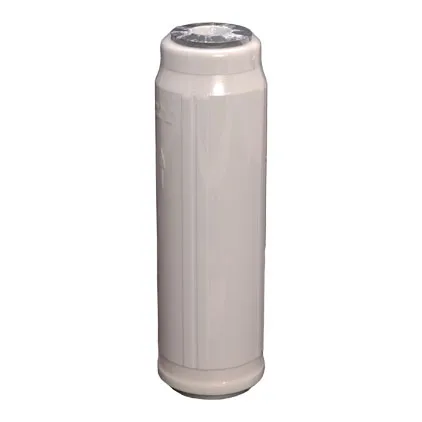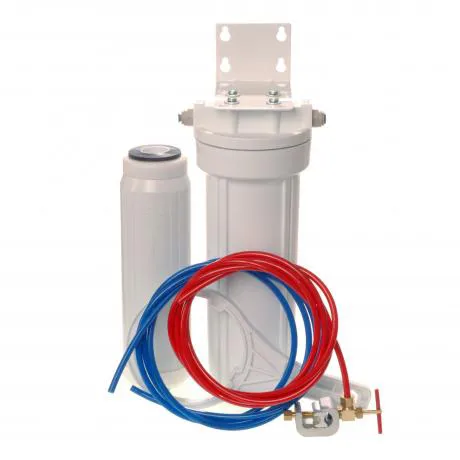Home / Replacement Cartridges / Replacement Cartridge for Pearl-M Water Filter


SKU: GAC10NKDFBOM
This is the replacement water filter cartridge for our Pearl-M drinking water filter.
This cartridge helps reduce the bad taste and smell of chlorine in your water as well as removing lead and other heavy metals. You should choose this cartridge if you live in a house that has lead pipework.
This cartridge uses a combination of Kinetic Degradation Fluxion (KDF) and Granulated Activated Carbon (GAC). KDF removes chlorine, lead, mercury, iron and hydrogen sulphide from water supplies through a basic chemical process called redox (oxidation/reduction).
When KDF is mixed with GAC it reduces other heavy metals such as aluminium, arsenic, cadmium, copper, nickel, chromium and other water soluble heavy metals. This cartridge will also remove sediment, dirt, rust, sand, silt, scale bacteria, algae, VOC's, THMs and much more.
We send out an email every 6 months to remind you to check your water filter performance.
The use of lead pipes has been banned in the UK since the 1970's. If your house was built after 1970 or has had all of it's pipework replaced since then, it's unlikely that you're going to have lead pipework.
If this doesn't apply to you because you live in some of the UK's older housing stock (built before 1970), and you're concerned about lead in your drinking water then the first thing to do is contact the company that supplies your household water and ask them to take a sample. If you're on a private water supply you may be asked to pay for this test.
The current permissable level of lead in water is 10 ppb. This was set in 2013. The UK may choose to reduce this even further to 5 ppb by 2036.
Water companies add orthophosphate to drinking water. Orthophosphate binds to lead pipes and helps prevent lead from dissolving into the water.
If your water company finds lead coming from one of their pipes, they should replace it at no cost to you. Water companies are responsible for the pipes up to your property boundary. These are often referred to as communication pipes. You are responsible for the pipes from your property boundary into your house as well as all your internal pipework.
Exposure to large amounts of lead can be harmful to health, especially for unborn babies and young children.
Lead is capable of crossing the placental barrier and harming the foetus. Children absorb more lead than adults due to their developing bones and organs which lead can become deposited in.
If small amounts of lead are consumed over time, this can build up and the compound effect can cause future health problems.
These days the risk of lead poisoning is much smaller than it was years ago as lead isn't added to paints, petrol or food containers. Lead in petrol has been banned in the UK since 1999. Lead in paints has been banned since 1992. It was added as a pigment and to speed up the drying process.
However, one of the main ongoing risks can be through drinking tap water that has flowed through lead pipes. This can result in lead contaminating the water supply.
Check the pipes under your kitchen sink and at your internal stop tap, which is usually found where your water supply enters your house.
You can tell if the seals start leaking, which is obvious, I know.
Even if there are no leaks you may find that the profile of the O ring becomes flattened because of prolonged time under compression. The cross section should be round and if it's not it may not seal easily.
However, I recommend that you replace the O rings every two or three years as a precautionary measure.
One of the main reasons for changing O rings periodically is that as they age and compress, the housing bowl needs to be tightened excessively. That leads to difficulty loosening the bowl from the cap next time the cartridge needs to be replaced.

Extremely effective water filter that uses a combination of GAC and KDF to remove lead, other heavy metals and so much more.
Explore products from other categories
We're here to help! Our dedicated helpline is ready to answer your questions and provide solutions.

Fountain Filters, Strowger House,
Sandy Lane Ind. Est.
Newcastle upon Tyne, NE3 5HE, UK.
https://w3w.co/pipes.ranked.dates
VAT Reg: 370859370